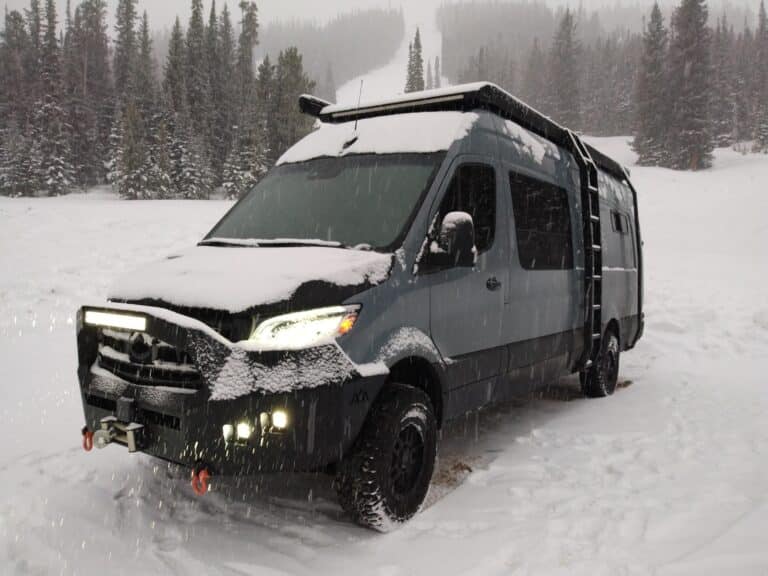How to Insulate Your Camper Van like a Pro

What comes to mind when you think of insulation? That pink stuff that makes you itch after touching it is what comes to mind for me, and I’m assuming it’d be the same for many people. Well, it’s true, it is pink, and it makes you itch, at least one type of insulation anyway. When it comes to insulation, there are many different types, of course, but here, I’m only going to discuss the types I’ve tried and gone with so far. See what we ended up using below.
Types of Insulation
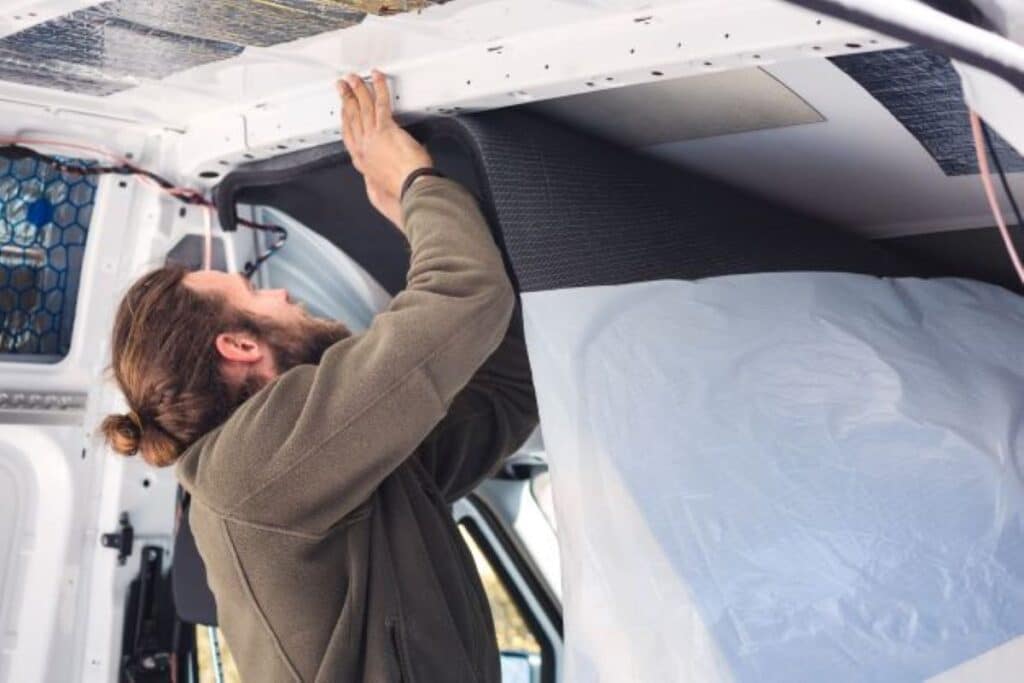
We looked at the three types of insulation: Havelock Wool, Rockwool, and Spray Foam. An R-value was a factor for us, albeit a small one. More importantly, our greatest concerns were being natural, non-itchy, and not as bad as others. The R-value range for the three is 3-4.3 per inch, so I think they were comparable.
Havelock Wool
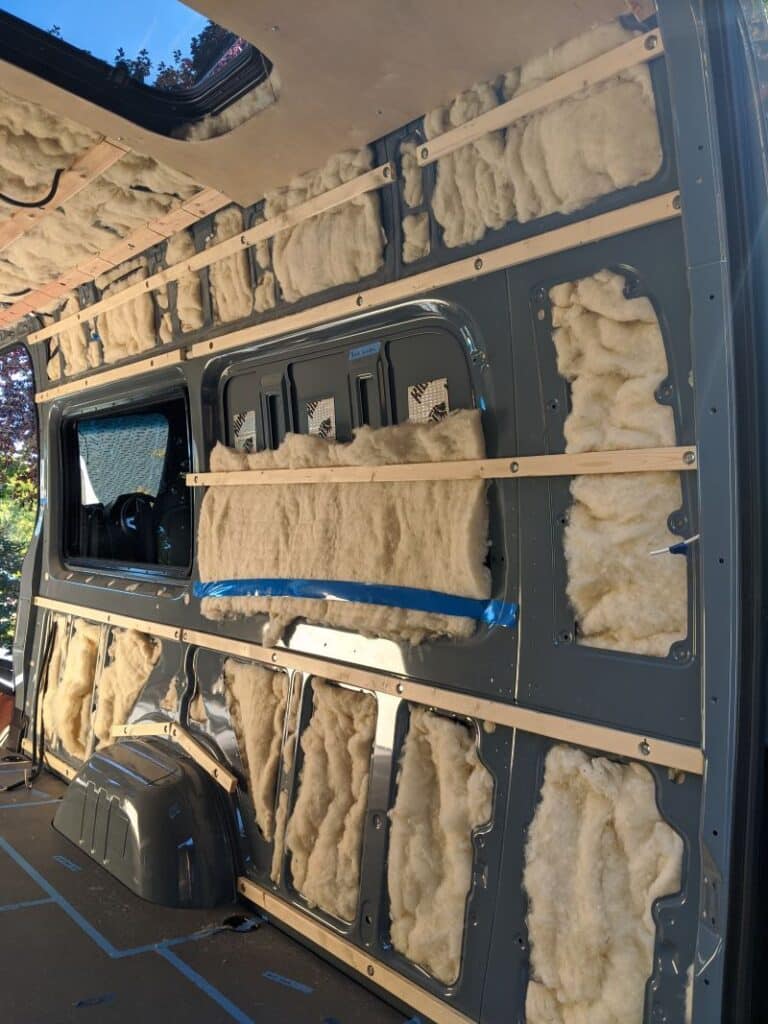
I had huge aspirations for Havelock Wool, but it left me defeated. Let me explain. I love that it is natural since it comes from Havelock Sheep, and it is sustainable as long as they are alive. It is about as green as you can get since it is all-natural.
It is a great product for your van conversion with an R-value of up to 20 at 5.5″ thick. It is so easy to install. It cuts and tears very easily, so you can stuff it into your van’s little spaces.
If you do not like barn smells, you may look elsewhere for an insulation product. This stuff smells like a petting zoo. It is not an obnoxious smell, which is nice when working with it. I have read and been told that the smell does go away.
I’m not sure how others have installed it, but the smell did not go away for us. The smell will whirl around the cab on a warm day with the windows down. I do not mind the smell, but it is a little annoying since I have, at least what I thought, completely removed it and gone with another product.
As I said, the smell was not too bad for me, most of the time, but the most important reason we had to remove it was my wife’s asthma. Not too long after installing it, she would start to have breathing issues. We were not living in the van at the time, just doing weekend camping and road trips.
After spending time in the van, she would start to have issues. Once out of the van after a few days, she would return to normal. It was pretty easy to trace it back to the havelock wool. So, it was back to the drawing board for an insulation type that met our needs.
Rockwool or Rock Wool
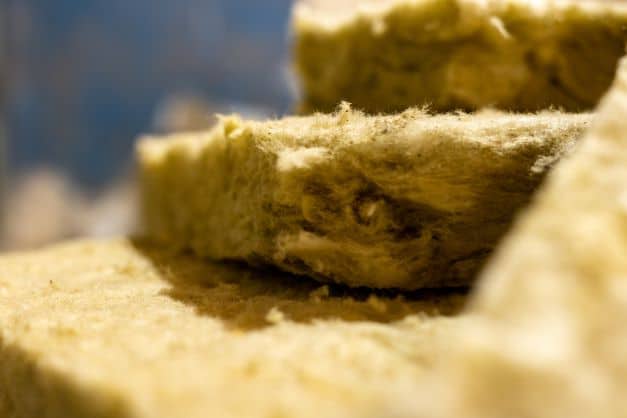
Another all-natural product, Rockwool, Rock Wool, or Mineral Wool, is produced from minerals (rocks) and a recycled steel byproduct known as slag by heating them up to liquid lava consistency and blowing it into a spinning enclosure, producing a fiber similar to cotton candy. In this case, the heat required to melt the rocks and slag is 2,900 degrees Fahrenheit.
The greatest benefits of Rockwool are its fire resistance, noise reduction, and of course what you are using its low heat transfer. All three of these are huge benefits for a van. The downside of Rockwool is, well, it is made from rock and steel, so working with it is a little tougher.
Cutting it, you’ll need a drywall knife or even a bread knife will work. It does not tear as easily as the Havelock, but it does stuff easily in all the little nooks and crannies. the other downside is when cutting, tearing, or just working with it, and it tends to give off little particles, so you’ll need to wear a mask when working with it.
Gloves are a good idea as well. It does not itch, really, but you can get slivers. Small slivers are the worst!!
Spray Foam
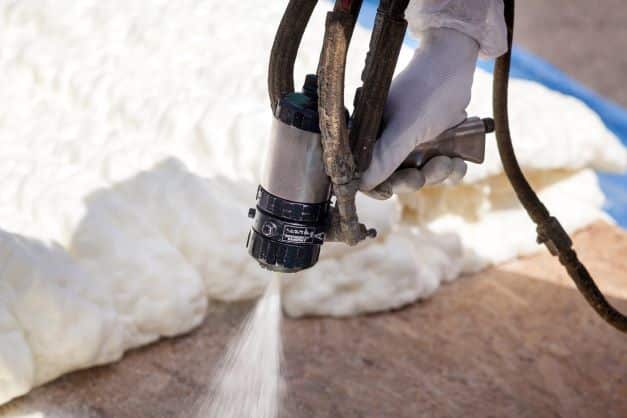
This stuff is messy! prep is very key to working with this stuff. You will want to tape off areas you do not want the foam to come in contact with. You will also want to practice with spray foam. Use a large piece of cardboard to practice until you get the hang of it.
You do not want to spray too much since it will expand, and, well, if you spray too much, it will expand much greater than what you need, creating more work once it has cured.
With the spray foam, you can get it into many small spaces, but again, you must be mindful of how much to apply. It will expand, and it will find a space to expand too. A downside I’ve heard is it warps the outer skin of your van. I suppose this can happen when applying too much product to an area and it expands too much.
Our Journey
As I described in the Havelock section, we had to remove it shortly after installation. I still feel it is a great product, but it did not work for us due to health factors. So the next product we used was the Rockwool. This one, to date, is working well in most areas. In the walls, I feel it is working great.
Since we have several windows, I can easily tell the temperature difference with my hand in front of the window versus an insulated wall. The ceiling, however, I’m still perplexed. It is keeping the heat in, which is its intended purpose, but we have a condensation issue driving me nuts!
Condensation is my achilles heel. When I see it, I get fired up. In the cab is where we noticed it most significantly. When in Colorado for skiing, we’d wake up in the morning and start warming up the van to drive to the resort. Once things started to thaw inside, water would pour from the center console in the headliner.
The front windshield and side windows inside would be a sheet of frost, even with four-season window coverings and some ventilation. Well, with the high roof, the cab has a rather large forehead, if you will, and it would frost up as well.
So I removed the Rockwool from the cab area above the headliner and used spray foam. This was not the easiest task to undertake, but it appears to have made a huge improvement in the end. it did not completely solve the issue since we still see a bit of moisture drip from the area, but not nearly as much as we did in the past.
There must be some areas that I missed or could not get to. This does not happen in a more temperate climate, but we love to ski, so we spend much time in very cold conditions. You can only have so much ventilation when it is 0 degrees outside.
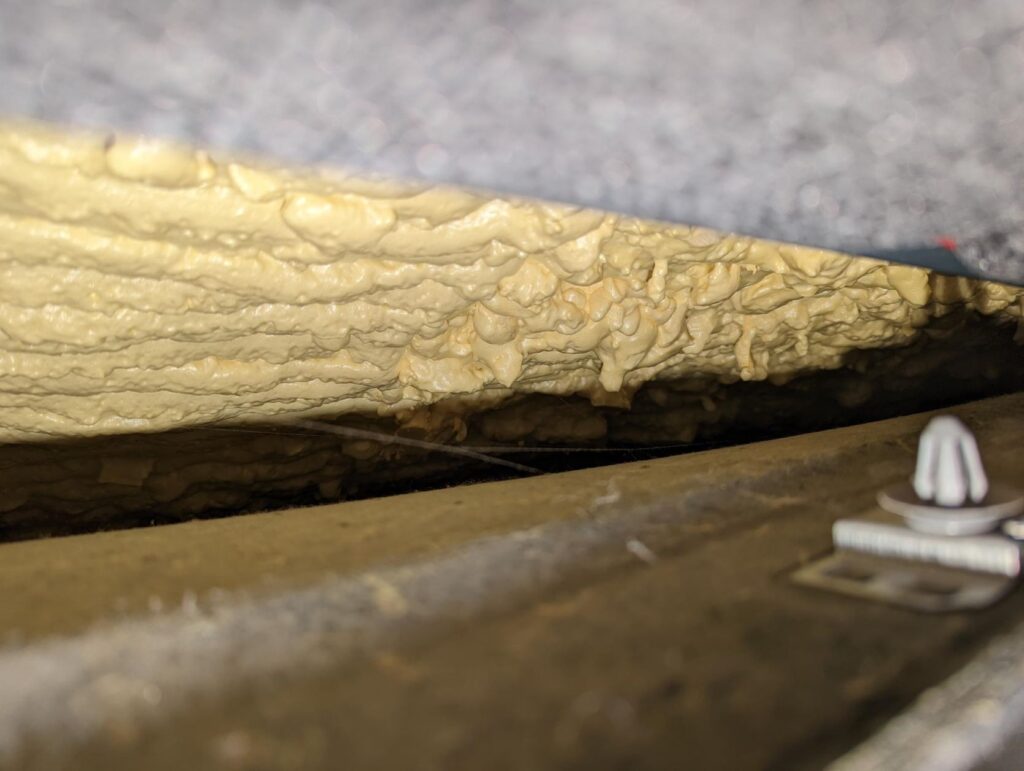
The next step is to use spray foam on the ceiling in the rest of the van so that condensation here, and there does not take any more unnecessary years off my life.
Conclusion
Use the product that most supports your needs and does not affect your health. As in several things in one’s life, the first idea is not always the best. You just have to take a deep breath and find another solution. And if that does not work, take another deep breath and try something else or give up, sell the van, and curl up into the fetal position to cry. I’m speaking from experience, of course.




